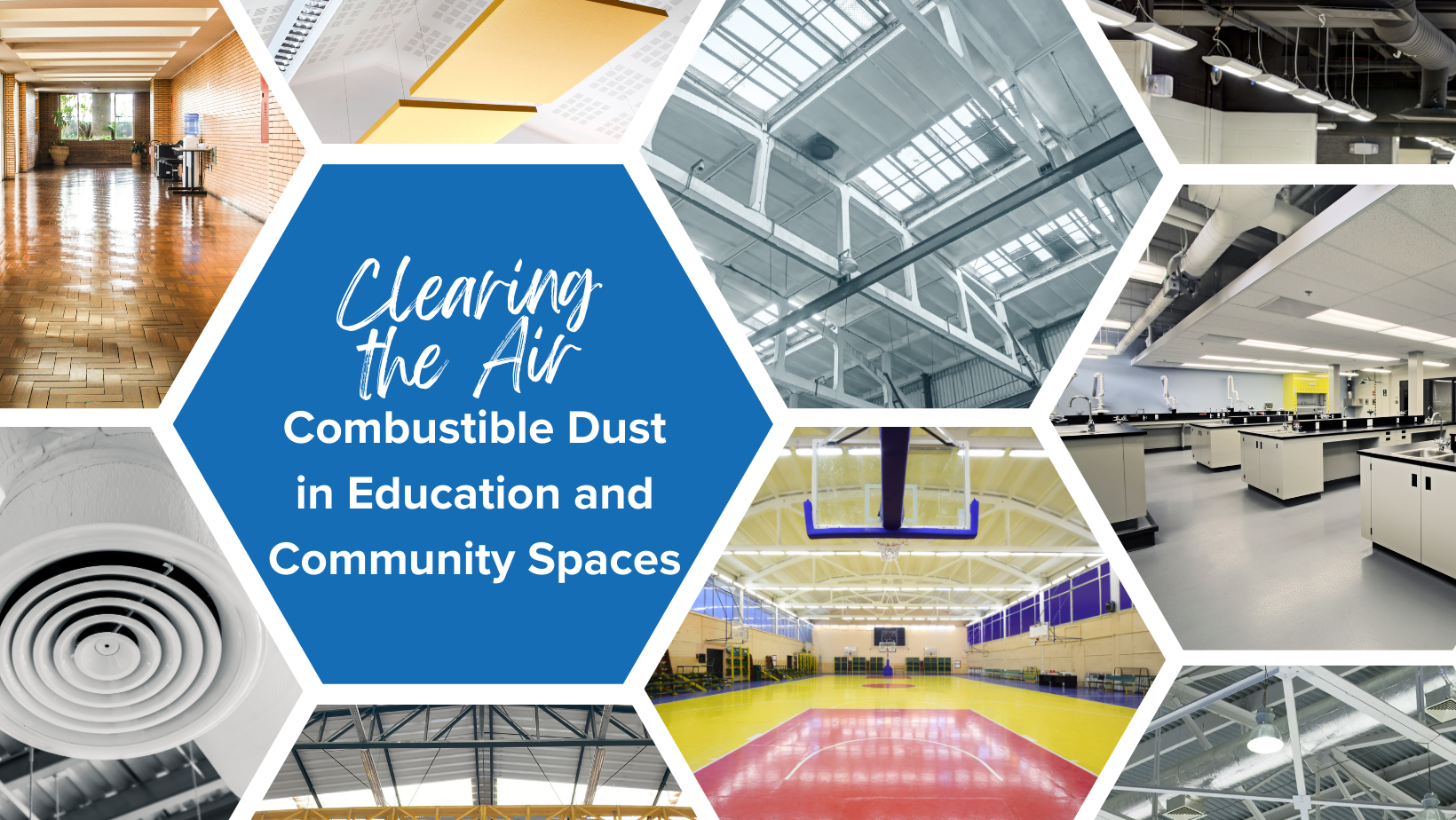
In the vibrant tapestry of educational and community spaces, safety is paramount. One often overlooked yet critical aspect of ensuring the well-being of occupants is the management of combustible dust. From classrooms to gymnasiums, these spaces can unknowingly harbor a potential fire hazard in the form of dust particles.
The Hidden Threat of Combustible Dust:
-
Ubiquitous Nature: Combustible dust is an omnipresent threat in various environments, including campuses and community spaces. Fine particles from organic and inorganic materials, such as wood, metal, or agricultural products, can accumulate over time and create a potentially explosive mixture in the air.
-
Fire and Explosion Risk: The combustible nature of dust makes it a significant fire and explosion risk. When dispersed in the right conditions, even a small ignition source can trigger a combustion event. In spaces like gyms with electronic equipment or schools with laboratories, the risks are heightened, necessitating proactive measures to manage and mitigate the threat.
The Importance of Combustible Dust Cleaning Regulations:
-
Compliance with Safety Standards: Implementing combustible dust cleaning regulations ensures adherence to safety standards established by organizations such as NFPA and OSHA). Compliance is not merely a legal requirement; it's a commitment to the safety of students, staff, and community members.
-
Prevention of Accidents and Fires: Regular cleaning of combustible dust is a preventative measure that significantly reduces the risk of accidents and fires. By addressing dust accumulation promptly, schools and community spaces minimize the potential for ignition sources to spark a dangerous event.
-
Enhanced Indoor Air Quality: Beyond the immediate fire hazard, combustible dust can also impact indoor air quality. Fine particles suspended in the air can contribute to respiratory issues and allergies, affecting the health and well-being of occupants. Cleaning regulations play a dual role in not only preventing fires but also maintaining a healthy indoor environment.
Combustible Dust Cleaning in Gyms and Schools:
-
Gymnasiums: Gyms, with their active atmosphere and equipment use, are particularly susceptible to combustible dust accumulation. Regular cleaning of sports equipment, ventilation systems, and surrounding areas is crucial. Establishing cleaning protocols for gymnasiums ensures that the space remains safe for physical activities.
-
School Laboratories and Workshops: Science laboratories and workshops in schools often involve materials that can produce combustible dust. Implementing strict cleaning routines, especially in areas where these materials are used, is vital. Regular inspections of ventilation systems and equipment can also contribute to a safer learning environment.
In the pursuit of knowledge and community engagement, safety should always be at the forefront. Combustible dust cleaning regulations provide a structured and proactive approach to managing a potential fire hazard in schools and community spaces. By adhering to these regulations, institutions not only comply with safety standards but also create environments where the quest for education and community well-being unfolds against a backdrop of utmost security. The investment in combustible dust cleaning is an investment in the safety, health, and longevity of the spaces where knowledge is cultivated and communities thrive.

